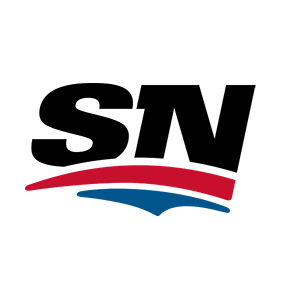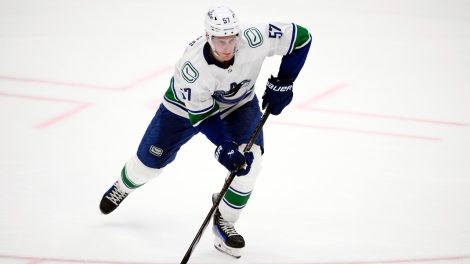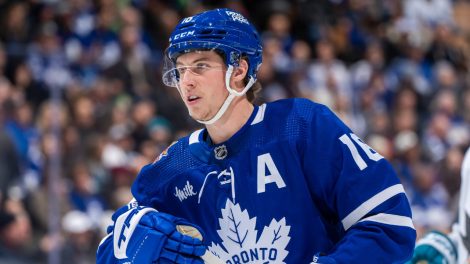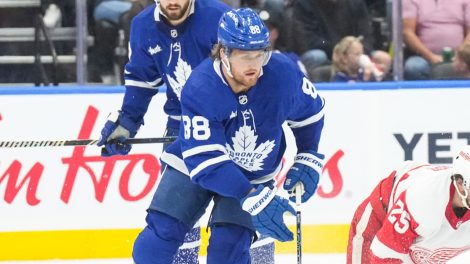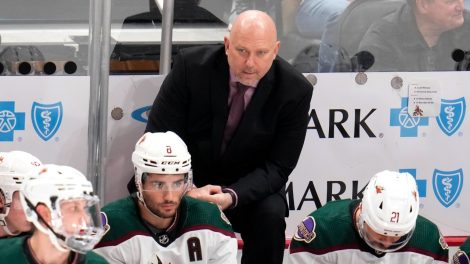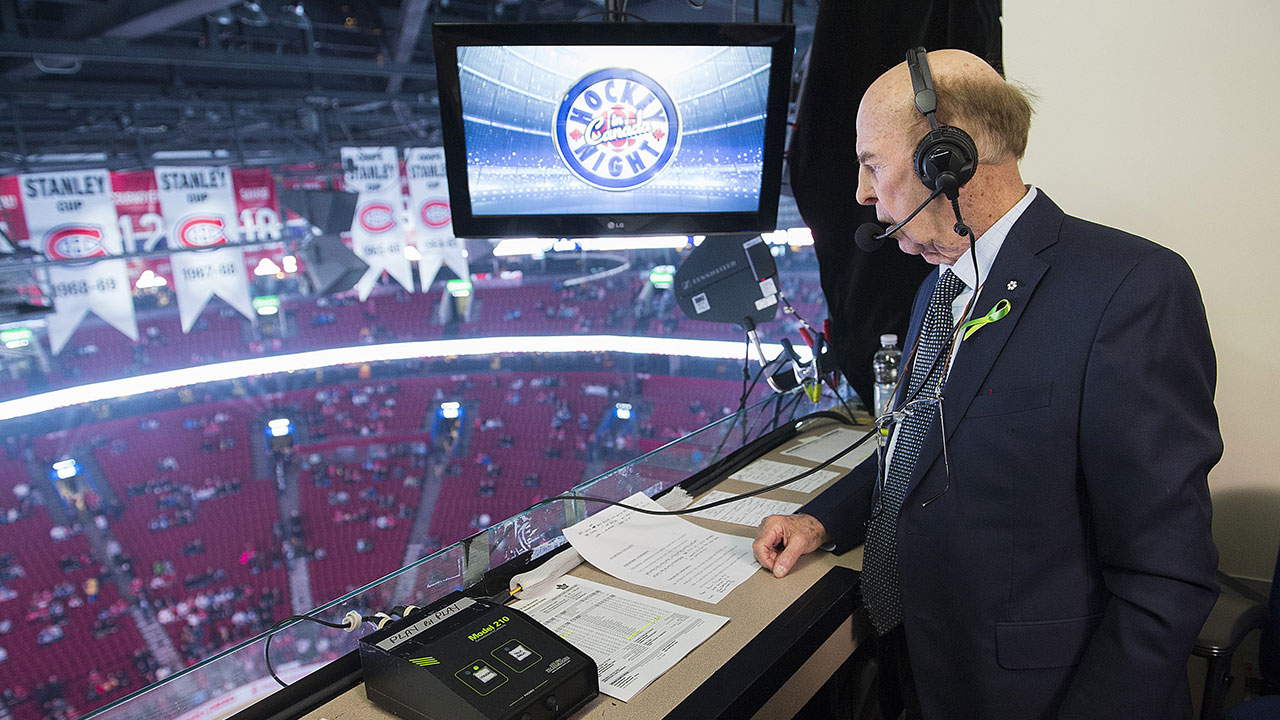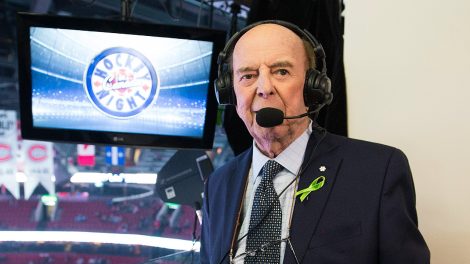When we talk about the return of sports in our current, COVID-19 world, there’s one word that tends to come up a lot: Bubble.
We’ve seen detailed plans from all four of North America’s major professional sports leagues centred around the testing, tracing, and quarantining of their players, with the NBA and the NHL so far appearing to have the most extensive protocols in place – ones that include all athletes and league personnel descending upon a single “bubble” site (or, in the NHL’s case, two hub cities) to play out the remainder of their seasons.
For epidemiologist Dr. Zachary Binney, this idea is one of four major pillars he’s looking for when examining leagues’ abilities to return to competition in a way that’s safest for all involved.
“If I had to summarize the most important things far and away, there’s really just four big elements that we need to be focused on,” Binney said during an interview on 31 Thoughts: The Podcast. “One is some sort of centralization or sequestering, to limit contact between people within the league and people outside of the league. Number two is frequent testing so that when cases do occur, they don’t turn into big outbreaks. Ideally, that would be daily testing.
“The third is mask-wearing all the time when you’re around anybody else and not actively on the [playing surface]. And the fourth is limiting time in enclosed spaces with many people – so, that’s dealing with locker rooms, showers, things like that. Really, really severely restricting the time that you’re spending together in those sorts of environments.”
For the NBA, the bubble is Disney World in Orlando. For the NHL, there will be two hubs – one of which could be in Canada, and the other reportedly in Vegas.
During his 31 Thoughts appearance, Binney provided in-depth explanations about the safety precautions required to bring sports back – including what these “bubbles” might look like, why fans shouldn’t be in the stands any time soon, and other measures leagues must consider before games can resume.
[relatedlinks]
Here are some takeaways from the conversation, which you can listen to in full here or wherever you download your podcasts:
The bubble should include all players, coaches, medical staff, and support staff.
“…All of those folks who have to interact together to make the league happen. You can interact within that group, but there needs to be very, very minimal contact between people within that group and people outside of that group. That’s the key, is to have absolute minimum, if not no face-to-face contact between people within the league and people outside of the league.”
Now that we know more about the spread of COVID-19, it’s become more clear that hotel and food services staff don’t necessarily need to be “in the bubble” like league staff do.
“I’ve come around and softened a little bit on my initial position where I said if you were setting up a bubble and you were sequestering folks, that would have to include, say, hotel staff and food service staff and things like that and people like that. And that’s because we didn’t really know. We thought that COVID-19 could be spread pretty easily from person to object to person — so, I cough and spread some respiratory droplets onto a table, and then you touch that table or that door knob or that food container or whatever, and then you touch your face and then you get COVID-19. And that is absolutely something that can happen, but what we’re learning is that seems to be a pretty uncommon route of transmission, and a lot more commonly it’s direct, person-to-person respiratory droplets spread.
“So, if you can eliminate that, then you can eliminate quite a bit of risk. You will never bring it down to zero, but you can bring it down, arguably, to below the necessary level. So if you, for example, never had housekeepers go into rooms where players or other league personnel were when they were there – like, they only went when they were out, during certain hours of the day — then maybe you don’t need to have the housekeepers be in the bubble. Maybe you can get away with testing them once a week and screening them for symptoms every day, but they can still go home and stay with their families. And maybe that’s enough.”
31 Thoughts Podcast@JeffMarek and @FriedgeHNIC chat with @zbinney_NFLinj about what the NHL should look for when setting up hub-city bubbles and much more on the latest 31 Thoughts podcast.
LISTEN: https://t.co/DQn3Y5kVYu
Presented by @GMCcanada pic.twitter.com/zzvulHUtfQ
— Sportsnet (@Sportsnet) June 18, 2020
Very frequent testing — “ideally, daily,” says Binney — while within the bubble will be imperative.
“The reality is, without a completely airtight bubble, cases are going to occur, especially with the level of disease that we have here in the United States. So, you need to have regular testing to root out those cases very early before they have a lot of time to spread to teammates or to folks on other teams. And as long as you can test frequently enough, then theoretically you can cut any transmission chains from the occasional case that does happen and therefore prevent an explosive outbreak within the league, which is really what you’re most worried about.”
But more attention should be paid to quarantining and testing before entering the bubble or hub city. Binney calls it a “clean period.”
“You need to test everybody a few times, over a few days, before they travel to the hub to make sure that you’re not bringing a case in … because then you’ve just contaminated the whole thing. So there needs to be a lot of work done on that. There also needs to be some work done on enforcing a real serious quarantine for about a week beforehand, where players and their families (ideally, anyone they’re interacting with), should really be going to the facility and home and the facility and home — and that’s it. They should not be interacting with anyone else … I think we need to be thinking about how we give players a clean period before they enter the hub. That’s something that I haven’t seen quite as much on as I’d like.”
Even with ample testing and a bubble system, positive tests will still occur.
“Look, if you’re going to set as your threshold zero cases in your league – like, that’s your goal and that’s the only thing you think is acceptable — then don’t come back. And I’m not saying that in a bad way … that is a perfectly defensible health position to take, just don’t come back at all.
“But if you do come back, recognize that pretty much, no matter what you do, you’re likely to get at least one or two cases. What you want to watch out for is, say, two or three or certainly four cases at the same time on the same team – so, within a team, a cluster of cases. That suggests that you have spread within a team and that you probably need to shut that team down in quarantine, everybody individually, for two weeks.
“Now, how does that happen in the middle of the playoffs without that team just forfeiting? I don’t know. I haven’t seen a contingency plan for that, but that’s realistically what you would need to do. That’s why the daily testing is so important.”
Multiple cases on multiple teams would mean shutting things down – at least temporarily.
“If you saw multiple teams — two, three, or four teams — each with their own cluster, that’s when you would think there is definitely widespread spread throughout the league, and you would want to shut the entire thing down. In the NHL’s case, you’d want to shut down that hub. In the NBA’s case, where every team is going to be in Orlando, you would have to shut down the league for two weeks and quarantine everybody separately.”
Face shields (like visors worn by hockey and football players) are good, but shouldn’t be relied upon – and they’re certainly not a replacement for bigger safety measures like quarantining, testing, and limiting contact while away from the game.
“It’s kind of the cloth covering on a Kevlar vest, if you will.
“I’ve often talked about this in football too, and I know the NFL is working with Oakley, the sunglasses manufacturer, to try to figure out a way to redesign the visors in helmets to provide more protection against respiratory droplets. I think it would be a great idea if you could fit hockey helmets with those as well.”
Fans can attend games ________
“When we have a vaccine.”
The idea of limiting capacity at sporting events, making mask-wearing mandatory, and spacing out fans in the stands is just a pipe dream at this point.
“Every step that we take back towards normality has a risk and a benefit associated with it. So, for example, we never shut down grocery stores because the risk of going to a grocery store is massively outweighed by the benefit of going to that store. You get food, right? That’s important.
“When you talk about adding fans [onsite at live sporting events], the benefit is really just financial for the teams and the leagues. That’s it. Nobody needs to go to a sporting event, and getting that many people together for an absolutely optional activity, to me, it just does not compute. The risk-benefit is totally out of whack … It’s a pipe dream to say that you’re going to be able to keep everybody six feet apart. And by the way, six feet is for normal talking, or just standing together and breathing. If you talk about singing, chanting, cheering, yelling … you need to be even further apart because respiratory droplets can spread farther.”
The wait-and-see approach might not prove as effective as you’d think.
“If you’re gonna come back, it kind of makes sense to me to try to come up with a plan that meets the requirements to keep people safe in an area with a lot of cases. You can’t wait and hope that you can execute an easier or softer plan like they might be able to do in Germany or New Zealand or South Korea or Taiwan.
“You’re going to have to come up with a plan that meets the needs of the U.S. If you can do that — and that has varied from sport to sport, but I’m encouraged by what I’ve seen of the NHL’s plan — if you can do that, then I think it makes sense to talk about bringing pro sports back sometime in the next couple of months. In other words, this is as good a time as it’s gonna get for a while. I think there’s also an argument to not bring them back at all, but if you’re going to bring them back, I don’t see a whole lot of reason to wait.”

